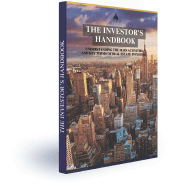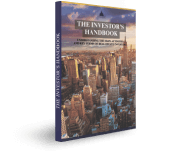The commercial real estate (CRE) market has seen significant changes over the past twelve months, with declining deal origination numbers and a growing spread between bid and ask prices. In this article, we’ll examine these market shifts, their causes, and what they mean for the future of the industry.
Declining Deal Origination
Data from Q4 2022 and Q1 2023 reveals a startling decline in deal origination year-over-year, dropping by 54% and 74% respectively. This downturn can be attributed to global bank failures, which have led to banks adopting a more defensive approach towards new loans. Amid concerns about property values and risk management, many lenders have become more cautious.
Despite this trend, Freddie Mac and Fannie Mae, accounting for nearly half of all multifamily loans, continue to lend. Their loans are usually tied to the 10-year treasury, which experienced a 75 basis point drop in the past month. While CRE mortgage rates have also decreased, the spread over treasuries has widened, reflecting market uncertainties.
The Widening Bid-Ask Spread
As the lending landscape changes, the spread between bid and ask prices for CRE has widened, making deal closures more challenging. A valuation reset is needed before deal transactions can rebound. In other words, sellers must lower their asking prices to align with current market realities.
Market Dynamics and Impacts
The past year has seen several significant shifts in market dynamics, impacting aggressive multifamily investors who disregarded risk management. In the next 12 months, some owners may be forced to sell due to their inability to refinance without substantial equity infusions. Additionally, the mark-to-market losses reported by lenders holding “safe” government bonds can unnerve depositors and potentially lead to bank runs. As a result, many banks and investors are holding onto cash until the situation stabilizes.
Lenders face $450 billion of mortgage debt maturing over the next two years, a concerning prospect for several reasons:
1. A large portion of this debt was financed at significantly lower rates than those currently available. This could result in negative leverage, cash flow issues, equity dilution, or even foreclosures for property owners.
2. Roughly 20% of the maturing debt is in office space, a sector already showing signs of default. Banks are wary of adding vacant office buildings to their balance sheets.
With this impending debt, it’s evident that only the most conservative CRE deals are likely to secure loans. Financing for new construction projects, viewed as high-risk, will be increasingly difficult to obtain.
The Need for Liquidity
Liquidity is a crucial factor in maintaining a healthy economy, as it facilitates investments, growth, and consumer spending. The potential lack of liquidity in the market could result in a steep recession similar to that of 2009, which required bank stress testing and recapitalization to recover. The economy’s stakeholders must maintain confidence to avoid triggering another financial crisis.
Adapting to Market Conditions
Considering these market conditions, investors should seek stable, cash-flowing properties. On a positive note, the economy remains resilient, with favorable job numbers and indications of slowing inflation. The Federal Reserve’s decision to taper back rate increases suggests that the tightening cycle may be nearing its end.
In conclusion, the changing landscape of the CRE market necessitates a strategic approach. Investors must remain vigilant in seeking solid investment opportunities, including distressed properties with significant upside potential. By adapting to these new market dynamics, stakeholders can successfully navigate the challenges and capitalize on emerging opportunities.
Navigating the New CRE Landscape
Given the current market conditions, private investors should consider the following strategies to maximize profits and minimize risks:
1. Focus on stable, cash-flowing properties: Seek out properties with a consistent income stream, allowing you to weather market fluctuations and maintain a reliable return on investment.
2. Identify distressed properties with upside potential: As the market adjusts, distressed assets are likely to become more prevalent. Investors who can identify these properties and develop effective strategies to turn them around stand to benefit from significant value appreciation.
3. Diversify your portfolio: Spread your risk by investing in various property types and locations, reducing your exposure to downturns in specific sectors or regions.
4. Monitor market trends and adjust strategies accordingly: Keep a close eye on market dynamics, adjusting your investment approach to capitalize on emerging opportunities and mitigate risks.
5. Develop relationships with lenders and brokers: Strong relationships with industry professionals can give you an edge in identifying attractive deals and securing financing, particularly in a challenging lending environment.
6. Maintain a cash reserve: A cash buffer allows you to take advantage of market opportunities and provides a safety net to cover unexpected expenses or vacancies in your rental properties.
In summary, understanding and adapting to the changing dynamics of the commercial real estate market is critical for private investors. By focusing on stable cash-flowing properties, identifying distressed assets, diversifying portfolios, and employing strategic investment approaches, investors can successfully navigate the current landscape and maximize profits. As always, professional expertise and a long-term perspective can further strengthen your investment strategy and improve your chances of success in this evolving market.
Are you interested in learning more about multifamily real estate investing? Our team of experienced professionals is here to help. Whether you’re looking for advice on conducting market research or need assistance in identifying the best investment opportunities, we have the knowledge and expertise to guide you through the process. Subscribe to our YouTube channel to access informative videos and expert discussions on multifamily real estate investing. Follow us on Instagram for inspiring visuals and exclusive content. Check out our new customized ChatGPTs: Real Estate Investing Coach and Real Estate. Ready to elevate your real estate investment journey? Contact us now to schedule a consultation and take the first step towards achieving your financial goals in the multifamily real estate industry.




























